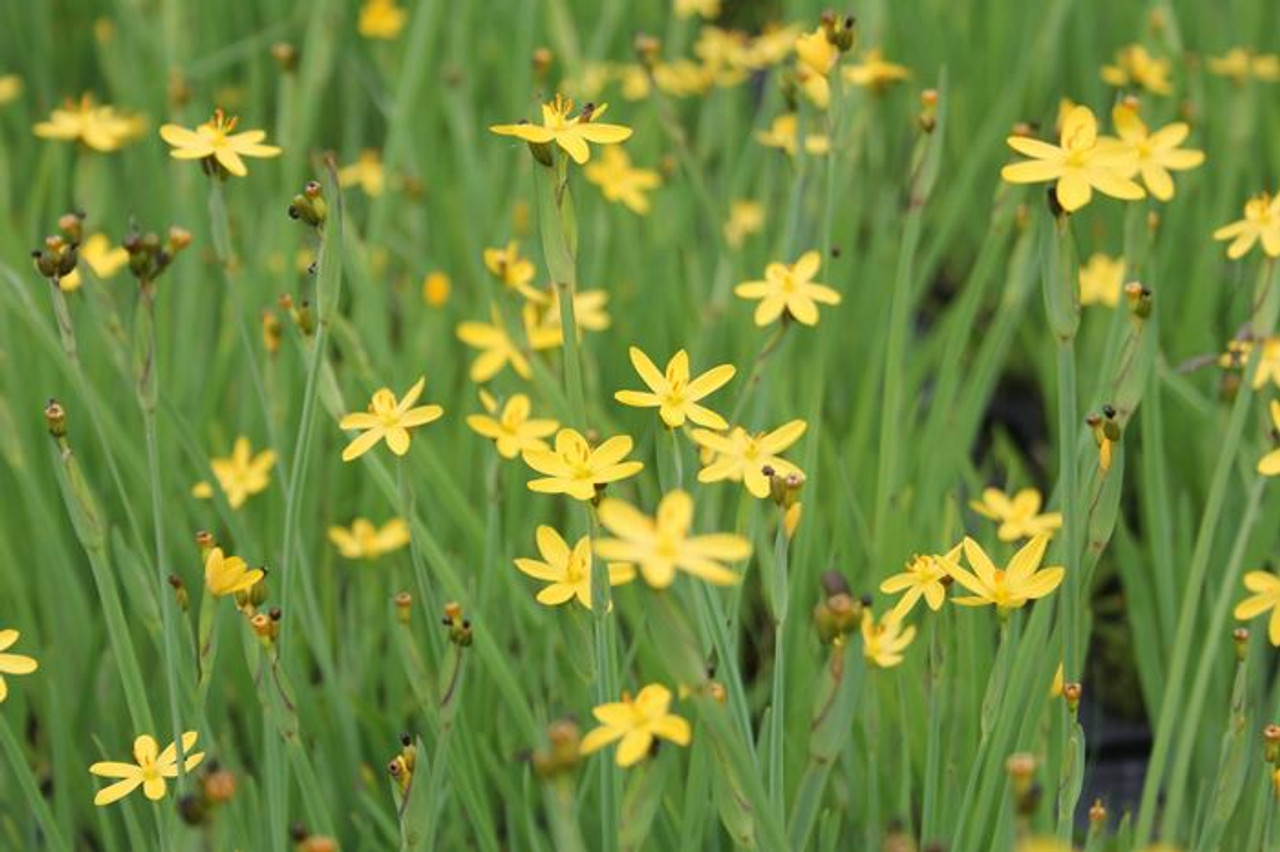
Yellow-eyed grass is a fascinating plant that is known for its unique characteristics and captivating beauty. This plant, scientifically known as Xyris spp., is native to various regions around the world and is often found in wetlands, meadows, and marshy areas. While it may seem like an ordinary grass at first glance, yellow-eyed grass has a lot more to offer than meets the eye.
In this article, we will explore 15 captivating facts about yellow-eyed grass that will not only ignite your curiosity but also deepen your appreciation for this remarkable plant. From its vibrant flowers and intriguing adaptations to its ecological importance and cultural significance, yellow-eyed grass is a subject worth delving into. So, let’s dive into the world of yellow-eyed grass and uncover the fascinating secrets it holds.
Key Takeaways:
- Yellow-eyed grass, native to North America, boasts stunning yellow flowers and thrives in wet environments, making it a low-maintenance, drought-tolerant, and valuable addition to any garden or landscape.
- This captivating plant symbolizes perseverance and adaptability, attracts butterflies and bees, and has medicinal uses, making it a favorite among gardeners and an essential player in wetland ecosystems.
The Stunning Yellow-Eyed Grass
Yellow-eyed grass, scientifically known as Xyris species, is a breathtaking perennial plant with vibrant yellow flowers that captivate any garden or meadow.
A Native of North America
This beautiful grass is native to the wetlands and sandy shores of North America, particularly in regions such as Florida, Texas, and Louisiana.
Eye-Catching Yellow Flowers
The yellow flowers of the yellow-eyed grass are the highlight of this plant. With their bright hue and intricate detailing, they add a pop of color to any landscape.
Unique Structure
Yellow-eyed grass has a distinctive structure, featuring long, slender leaves and tall, erect stems that hold the beautiful flowers.
It’s All About the Eyes
The name “yellow-eyed grass” comes from the distinctive appearance of the flowers. The center of each flower resembles a mesmerizing yellow eye, giving the plant its unique charm.
Thrives in Wet Environments
Yellow-eyed grass is best suited for wet environments, such as marshes, wet prairies, and the edges of ponds or lakes.
A Valuable Ecosystem Player
Yellow-eyed grass plays an important role in wetland ecosystems by providing habitat and food for various bird species, butterflies, and other pollinators.
Low-Maintenance Plant
If you’re looking for a low-maintenance plant, yellow-eyed grass is an excellent choice. It requires minimal care once established and can thrive in both full sun and partial shade.
A Natural Groundcover
Due to its spreading nature, yellow-eyed grass can also be used as an attractive groundcover to control erosion and add beauty to garden beds or borders.
Hardy and Drought-Tolerant
Despite its preference for wet environments, yellow-eyed grass is surprisingly tolerant of drought conditions once it is fully established.
Medicinal Uses
In traditional medicine, yellow-eyed grass has been used to treat various ailments, including digestive issues, inflammation, and respiratory problems.
Symbolic Meaning
In some cultures, yellow-eyed grass symbolizes perseverance, adaptability, and the ability to thrive in challenging conditions.
A Favorite Among Gardeners
Gardeners and landscaping enthusiasts adore the yellow-eyed grass for its unique and eye-catching appearance, making it a popular choice for ornamental gardens.
Attracts Butterflies and Bees
The vibrant yellow flowers of the yellow-eyed grass act as a magnet for butterflies and bees, adding both beauty and biodiversity to any garden.
Seeds and Propagation
If you want to grow yellow-eyed grass, you can propagate it from seeds or by dividing the clumps in late spring or early summer.
These 15 captivating facts about yellow-eyed grass showcase the beauty, versatility, and ecological importance of this stunning plant. Whether you’re a gardener or simply appreciate the wonders of nature, consider adding yellow-eyed grass to your landscape for a touch of vibrant elegance.
Conclusion
Yellow-eyed grass, with its vibrant blooms and unique characteristics, is truly a fascinating plant. From its delicate appearance to its ability to thrive in various ecosystems, this perennial herb captivates the imagination of both nature enthusiasts and casual observers. Whether you’re exploring wetlands or adding a touch of beauty to your garden, yellow-eyed grass is a wonderful addition to any landscape.
FAQs
Q: Where can I find yellow-eyed grass?
A: Yellow-eyed grass can be found in wetlands, meadows, and grassy areas across North America, especially in regions with well-draining soil and ample sunlight.
Q: Does yellow-eyed grass require special care?
A: Yellow-eyed grass is fairly low-maintenance and requires minimal care. It thrives in moist soil conditions but can also tolerate periods of drought. Regular watering and occasional removal of dried foliage are usually enough to keep the plant healthy.
Q: Can yellow-eyed grass be grown in pots or containers?
A: Yes, yellow-eyed grass can be grown in pots or containers as long as they provide proper drainage. Use a well-draining potting mix and water regularly to keep the soil moist but not waterlogged.
Q: When does yellow-eyed grass bloom?
A: Yellow-eyed grass typically blooms in late spring to early summer, producing beautiful yellow or white flowers that add a splash of color to the landscape.
Q: Is yellow-eyed grass beneficial for wildlife?
A: Yes, yellow-eyed grass serves as a valuable food source for various insects, birds, and small mammals. It also provides shelter and nesting sites for certain species, contributing to the overall biodiversity of an ecosystem.
Was this page helpful?
Our commitment to delivering trustworthy and engaging content is at the heart of what we do. Each fact on our site is contributed by real users like you, bringing a wealth of diverse insights and information. To ensure the highest standards of accuracy and reliability, our dedicated editors meticulously review each submission. This process guarantees that the facts we share are not only fascinating but also credible. Trust in our commitment to quality and authenticity as you explore and learn with us.
